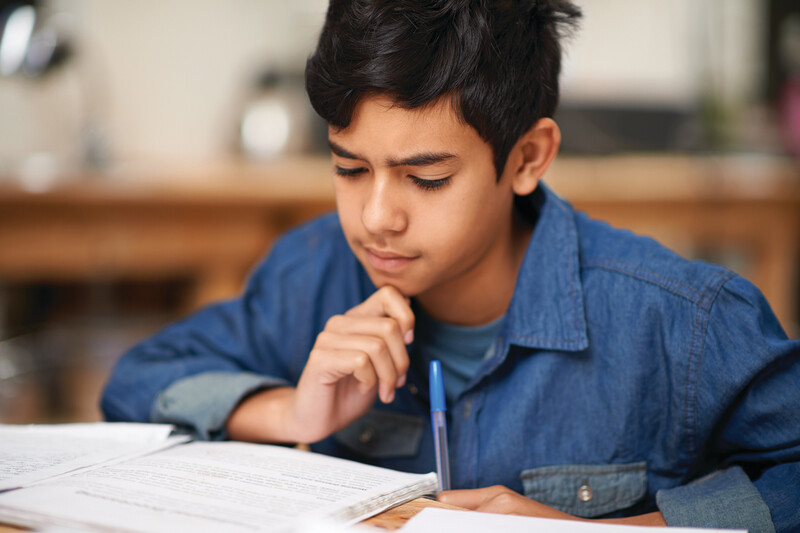"Have it your way" may be a catchy slogan, but how does it work in education? This month's issue of Educational Leadership explores aspects of personalized learning. How do educators create customized learning experiences for each student? What effect does personalization have on learner engagement? And what role does technology play? The articles in this issue address practical considerations for implementing student-centered learning, cautionary tales about moving too quickly toward personalization, and profiles of schools and classrooms that have embraced this work.
Personalized Learning Defined
Carol Ann Tomlinson ("Let's Celebrate Personalization: But Not Too Fast") writes that, "There are currently so many iterations of what personalization looks like that it begins to look like everything—and nothing." Several authors in this issue agree that it's hard to pin down a definition of personalization to a few words. Consider some of the following definitions. Work with your PLC to compare and contrast key words. What common ground do the authors cover, and where do they diverge?
- Tomlinson cites the Glossary of Education Reform as a place to begin, stating that personalization refers to "a diverse variety of education programs, learning experiences, instructional approaches, and academic support strategies that are intended to address the distinct learning needs, interests, aspirations, or cultural backgrounds of individual students."
- Jim Rickabaugh, Christina Sprader, and James Murray ("A School Where Learning is Personal") write that personalized learning "nurtures powerful learners rather than just proficient students; positions learners as partners with educators to identify learning goals; design learning paths, create learning experiences, and share accountability for learning progress; and is competency-based, in that progress is based on learning rather than on time spent in learning activities."
- Paul Emerich France ("Is Standardization the Answer to Personalization?") paints the picture of personalization in his classroom as "personal, relevant, and student-driven."
- Bena Kallick and Allison Zmuda ("Orchestrating the Move to Student-Driven Learning") offer this definition: "a progressively student-driven model in which students deeply engage in meaningful, authentic, and rigorous challenges to demonstrate desired outcomes."
Look Before You Leap
For all its merits, there are just as many concerns about personalized learning. Two authors in the issue caution readers to think twice before this approach: "Let's Celebrate Personalization: But Not Too Fast" by Carol Ann Tomlinson and "Personalization vs. How People Learn" by Benjamin Riley. Read these two articles and discuss the key ideas. What other concerns or cautions would you add?
- "Let's Celebrate Personalization: But Not Too Fast:" Tomlinson offers several questions that administrators and teacher leaders should ask before making an instructional shift to personalization. Whether your school is currently considering personalized learning, has already made the shift, or may consider it in the future, answer Tomlinson's 10 questions with your team. Then make a list of other questions you think schools should consider.
- "Personalization vs. How People Learn:" Riley takes a more critical view. He points out that there's no rigorous research to prove that personalized learning works and explains the conflict between personalization and cognitive science. Do Riley's concerns give you pause? Keep his points in mind as you read the other articles in the issue.
Baby Steps toward Personalization
Shifting to full implementation of personalization is no small feat. Several articles in the issue suggest small ways you can dip your toe into the personalized-learning pond. Talk with your colleagues about how you might make small changes to personalize learning for your students.
- Cathy Vatterott ("One-Size-Doesn't-Fit-All Homework") writes about an elementary school that takes a customized approach to homework assignments. How could you allow your students more choice in their take-home assignments?
- Meng Li Lusardi ("Making Projects Personal") redesigned a project assignment to give students more flexibility to showcase their creativity and practice responsibility. Think of a project you have assigned in the past. How could you revise it to allow students to follow their passions and make strong connections to a content area? Could you co-create a rubric like Lusardi did?
- In their article "A Personalized-Learning Toolbox for Teachers," Jason Pasatta, Erica Hamilton, and Stephanie DeDoes describe how a district prepares educators to personalize learning for their students. Among other aspects of the program, the district sets aside time for educators to experience personalization as learners. How could you provide educators with an opportunity to be the students in a personalized-learning environment? What effect might this experience have on teachers?
Resources for Further Study
Use these ASCD resources to learn more about personalized learning.
ASCD Books
Students at the Center: Personalized Learning with Habits of Mind (2017) by Bena Kallick and Allison Zmuda
Tapping the Power of Personalized Learning: A Roadmap for School Leaders (2016) by James Rickabaugh
How to Teach Now: Five Keys to Personalized Learning in the Global Classroom (2011) by William Powell and Ochan Kusuma-Powell
Personalizing the High School Experience for Each Student (2008) by Joseph DiMartino and John Clarke
Previous Issues of Educational Leadership
PD Online Courses



